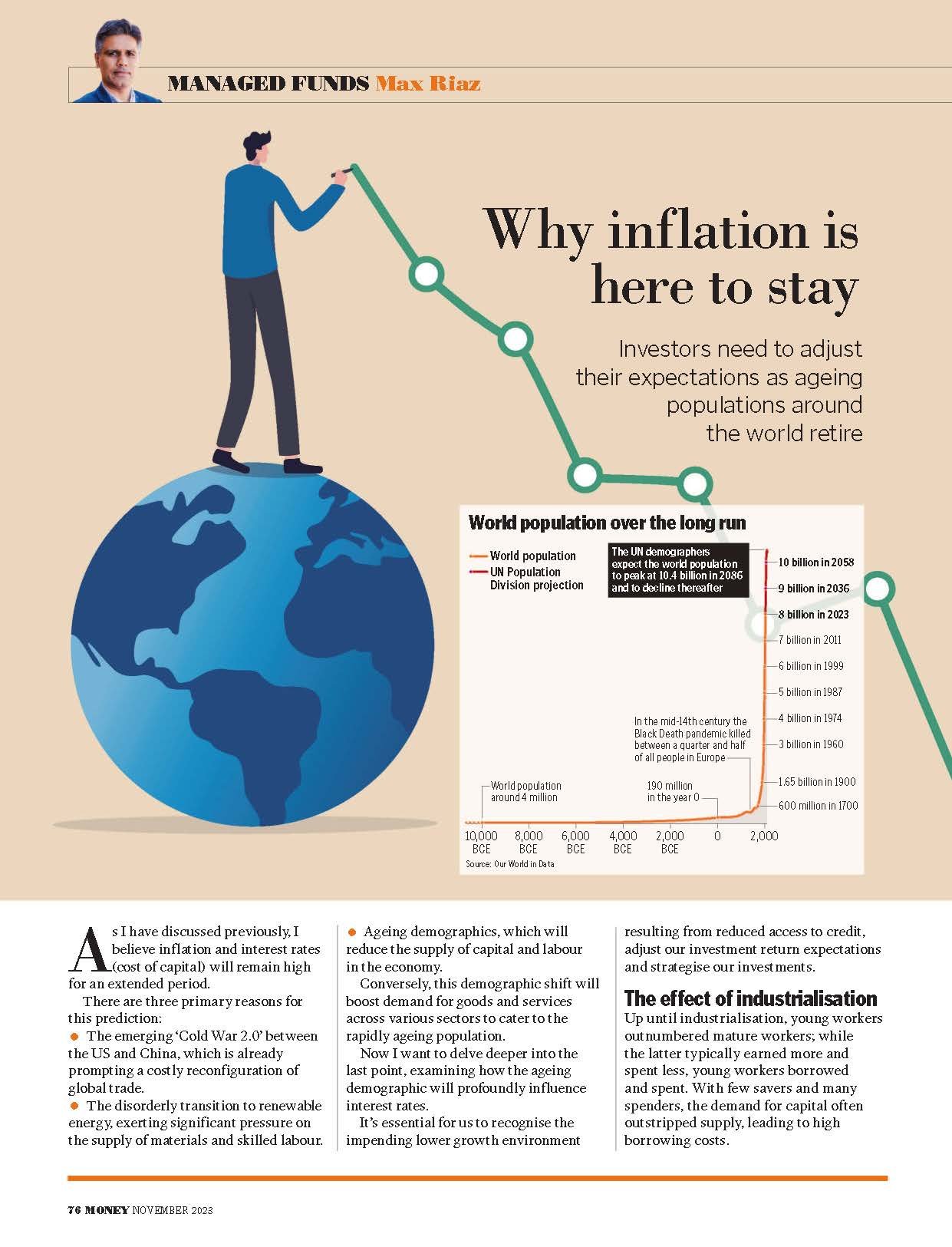Investing in stocks can pay off considerably if done with the right mindset.
/The skill of researching and successfully picking stocks takes years to develop. Investing in stocks is a long term proposition. If you need to use the money any time soon you should not be investing in stocks as the share market can be volatile. Investing in stocks requires a commitment of five, ten, twenty years. The companies we invest in need the time to devise and implement marketing strategy, grow sales, and invest in their operations. Revenue growth can take time to respond to these efforts by Management. With patience and a longer time frame, it is possible to do very well investing in stocks. Otherwise, the only sure way to double your money on a short term basis is to fold it and put it safely in your pocket.
Investing in companies is as much a relative game as it is an absolute. Relative in the sense that we seek to invest in the best possible company or two that we can find in the relevant sector. If we feel that the story is beginning to change in favour of another company, then we sell the first story and make the switch to the more compelling story of another stock. That being said, companies and their stories rarely change overnight. It takes years for stories to develop and for management to execute their strategies.
Photo: John Templeton (Source: NY Times)
From a professional investor point of view, we like to invest in companies and sectors that we understand. We get that understanding, firstly, from having a team of investment managers who have worked in diverse industry sectors before working in financial markets. Secondly, we engage directly with companies that we invest in and seek to get a deeper understanding of their operations, industry and strategy. We feel this deep level of research gives us an advantage when assessing stocks for their ability to grow their revenues, income, and stock valuation.
For example, one of our investment managers has previously worked in logistics and supply chain functions of large companies. We were able to leverage that background when analysing Ocado Group Plc who’s business model is improving on the supply chain of online grocery retailing. We had a good appreciation of the importance of inventory management within the context of a warehouse layout.
We understand the complexity involved in planning for complex delivery routes while ensuring delivery vans run full, follow an efficient delivery path, and the delivery network is managed flexibly to accommodate the requests for new delivery orders during the day. When we analysed Ocado group’s solution to address these challenges with high levels of automation we could appreciate why their operational model was unique and would be in demand from other bricks and mortar retailers wishing to profitably activate their online grocery retailing strategy.
A key benefit of having an intimate understanding of the way a company operates and its value proposition is that it gives you the emotional strength to withstand the volatility of the market and to view any general sell off in the market as an opportunity to add to your position in the stock. Once we are comfortable with our analysis of a stock and the drivers of its earnings it is then a matter of showing patience and being impervious to market volatility. Bad economic news, higher interest rates, wars, elections etc any of these can push the market down. Trying to figure out what the stock market is going to do next by poring over graphs of economic statistics or astrology charts is wasting your time. Trying to predict the market is guess work!
When researching a company, the sector it operates in is a good place to start thinking about the questions to ask of its Management. In terms of stock valuation, we simply don’t evaluate to a general maxim such as sell when the stock price doubles or sell when the price falls by 15%. There is no formula that we follow that applies to all stocks in terms of triggering a recommendation. We apply different valuation approaches, assessment criteria’s and expectations to stocks in different sectors and with different stories. For example, a stock that has risen 50% but is small and in a fast growth category with large market potential will likely continue to attract a positive recommendation from us. On the other hand, a stock that has risen 50%, is in a slow growth sector and is hitting the point of saturation in market share will likely see us taking profits or completely walking away from it.
Stocks can be divided into five categories. One is fast growers, two is slow growers, three is cyclicals, four is asset plays and five is turnarounds. These categories are just hardlines and not absolute. Some companies may not fit neatly into a category while others may be in two categories at a point in their lifetime. Fast growers eventually slow down as they run out of places to expand. Cyclicals experiencing long down cycles may become turnarounds and once recovered they may become cyclical again. In general, it is easier to go from $100 million in sales to $200 million than it is to go from $10 billion in sales to $20 billion in sales. Small to medium size companies tend to have more upside potential than large companies. That said, some big companies defy their size and find exciting new ways to grow their earnings as well as good opportunities exist in cyclical companies regardless of their size.
Most people, when investing, dream about investing in a fast-growing company over a sustained period but there are not a lot of these types of companies. However, when you do come across one you will notice that their growth is so powerful that you don’t have to catch them just as they are taking off, there is plenty of time if they are going to continue growing for years to come. For example, CSL traded at under $5 in 1999 on ASX and twenty years later the company has grown its share price by 47x to $236 per share. Rapid revenue growth and rapid earnings growth are the hallmarks of a fast-growing company but that’s not enough to rely on. Behind hot sales is a balance sheet that needs to be checked to ensure the liabilities are not growing so fast that they bring the whole company to its knees e.g. should there be a squeeze on the credit market. During the great recession of 2008, the credit squeeze was a significant factor that brought many companies to the brink while many others were pushed into liquidation.
One way to look at a growth company is in terms of, say it has 10 years of growth to run, you don’t want to buy it when it is in the first, second, or even third year. Let the company establish a formula for growth in the first three years. And once they have a track record of executing on the growth formula and demonstrate they have a growth formula that will likely run for many years to come, then it is time to start taking a position in such a company. Again, think of CSL and how long it has been running.
































